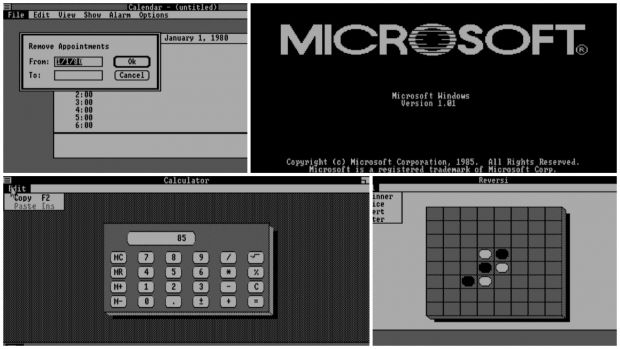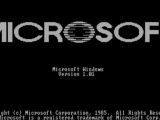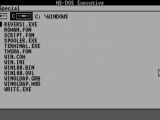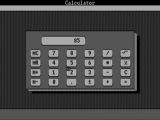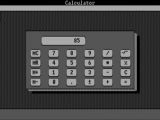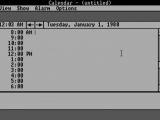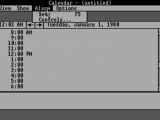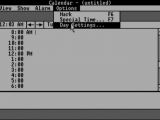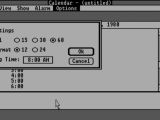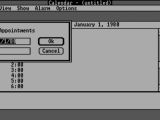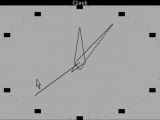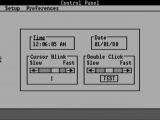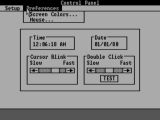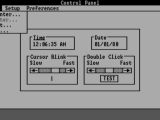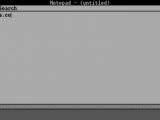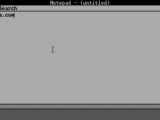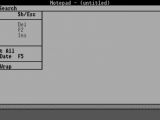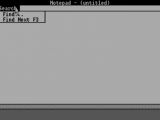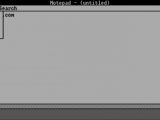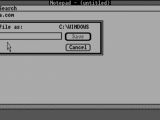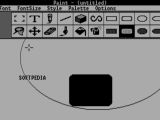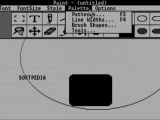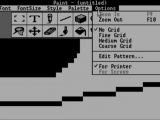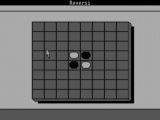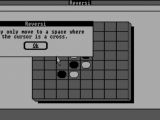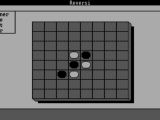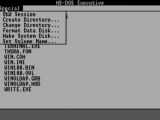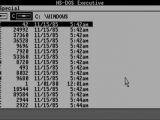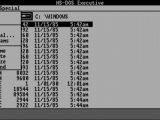Windows 10 has nearly 4 million users right now and it’s no wonder why: Microsoft is doing a terrific marketing push for the new operating system, and pretty much everyone out there has heard about the new operating system that will revamp the company’s flagship product from the ground-up.
But while the whole world is waiting for Windows 10, do you remember how it all started?
It was on November 20, 1985 that Bill Gates RTMd Microsoft’s first Windows version, intuitively called Windows 1.0 and supposed to change the way we worked on the computer. Pretty much the same thing that Windows 10 promises to do this year.
Windows 1.01 was the first Microsoft graphical 16-bit operating system, obviously based on MS-DOS and putting the focus on the mouse more than ever before. Just imagine that, at that time, a computer mouse wasn’t something as common as today, so adding support for a mouse in the operating system was indeed a big achievement.
Today, we’re going through the feature lineup of this very first Windows version just to remind us that, despite the imminent arrival of Windows 10, there was a time when people actually survived without a glossy Recycle Bin icon, without multiple desktops, and without a resizable Start menu.
Times have changed, that’s true, but let’s have a close look at Windows 1.01 to see if there’s still anything that survived for nearly 30 years in our favorite desktop operating system.
Interface - old-school, baby!
Just as expected, Windows 1.01 doesn’t have anything too exciting in terms of looks, but for 1985, it surely brought a pretty neat interface that made it quite easy to use for everyone.
Windows 1.01 was often described as a front-end for MS-DOS and it’s no wonder why. It’s more of a GUI for MS-DOS, and if you've ever used Norton Commander, you might be very familiar with its interface. Needless to say, it brought quite a few innovations for the time, including support for video cards.
“Built for a mouse, insanely easy to use with a keyboard.”
As you can see in the photo gallery after the jump, Windows 1.0 also included a taskbar, but at that time, it was just a different panel where the running apps were displayed.
And yet, it’s important to know that Windows 1.0 didn’t allow windows overlapping, and although you could have more than 1 program running at the same time, only a single window could be displayed on the screen.
Features - a clock, a calendar, a game, and… that’s it
In terms of features, Windows 1.01 was quite basic, but you still had some goodies to get your stuff done. Just like today, that is.
The operating system came with drivers for video cards, mouse, keyboard, and printers, so yes, you could even print your documents if you had a printer. At that time, such hardware was really uncommon, but Windows 1.01 still had such capabilities.
The operating system had a calculator app installed by default, so you could perform basic operations on your computer. There was also a calendar that allowed you to set appointments, configure alarms, and view your schedule, which for that time was extremely useful. You were allowed to save calendars and choose between a 12- and 24-hour day format.
Contrary to the calendar, the pre-installed clock was rather basic and you had absolutely no option, so the only thing you received was an analog clock showing you the current time and nothing more.
The Control Panel wasn’t as advanced as today, but it still allowed you to configure screen colors, current time, cursor blinking speed, double-click speed, add new fonts, and install printers.
And because productivity was the main concern at that time (it still is these days for the “new” Microsoft), you were also allowed to create documents in… Notepad. What’s really surprising is that many of the features available in Windows 1.01’s Notepad still exist today, so for instance, you were allowed to enable Word Wrap, search for text, select all, cut, copy, paste, and clear. Just the basic things that are still available in today’s Notepad.
One of the most advanced applications in Windows 1.01 was Paint, the drawing app that came with quite a wide array of features, enabling you to draw shapes, use text, change colors, and switch between several tools to make your painting more visually appealing. You could obviously save your drawings, change brush size, and pick between different fonts.
And last but not least, gaming was possible at that time, so you had Reversi with multiple difficulty levels and a very basic interface to waste your time at work.
“Who likes this full-flat taskbar?”
Overall, Windows 1.01 had nothing but the essential stuff for the time, so with little effort, most of the things we do today and that are not related to email, browsing, or the Internet in general could be performed on this old-school OS too.
Performance - no SSD needed, two floppy disks were enough
In terms of performance, it’s hard to describe Windows 1.01 as a fast platform. It was pretty advanced for its time, but its specs pretty much speak for themselves.
Color monitor 256 KB of memory Two floppy disks or hard drive Printer for printing support
Windows 1.01 was entirely built around a mouse, which, as mentioned before, was pretty uncommon for that time. Just think about Windows 8, which was designed for touch-capable devices, but everyone wanted to use it on a desktop computer.
Although a mouse wasn’t mandatory in Windows 1.01, it was recommended for the full experience, but Microsoft had to face an avalanche of criticism for this new direction.
It’s pretty clear that, every time the Redmond-based tech giant tried to change something about Windows, it had to cope with massive criticism from media, experts, and users, so the Windows 8 hate might not be so out of the ordinary, as some might be tempted to believe.
Conclusion
But living proof that Microsoft knew that it lacked key features, performance, and support for more apps is the number of updates that came afterwards. Windows 1.02 was launch in May 1986, followed by Windows 1.03 in August the same year. Windows 1.04 came out in April 1987.
One thing that needs to be mentioned about Windows 1.01 is that it didn’t support the executable files that we still use today, and despite the fact that it lacked so many features, it actually set the foundation of a product that everyone uses these days.
Windows 1.0 was pretty much the old-school brother of Windows 8. Both were severely criticized, both were considered to be software disasters, and both failed to impress. But both turned out to be what Microsoft needed to develop an operating system that everyone uses on a daily basis for work, gaming, browsing, and staying in touch with their close ones.
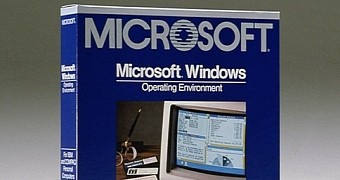
 14 DAY TRIAL //
14 DAY TRIAL // 